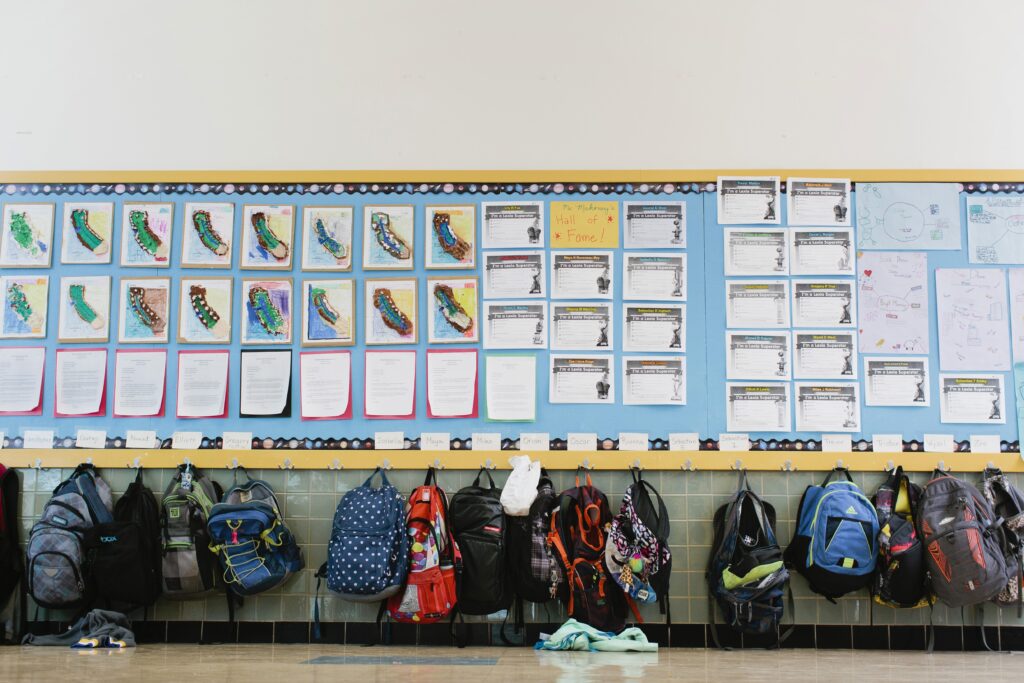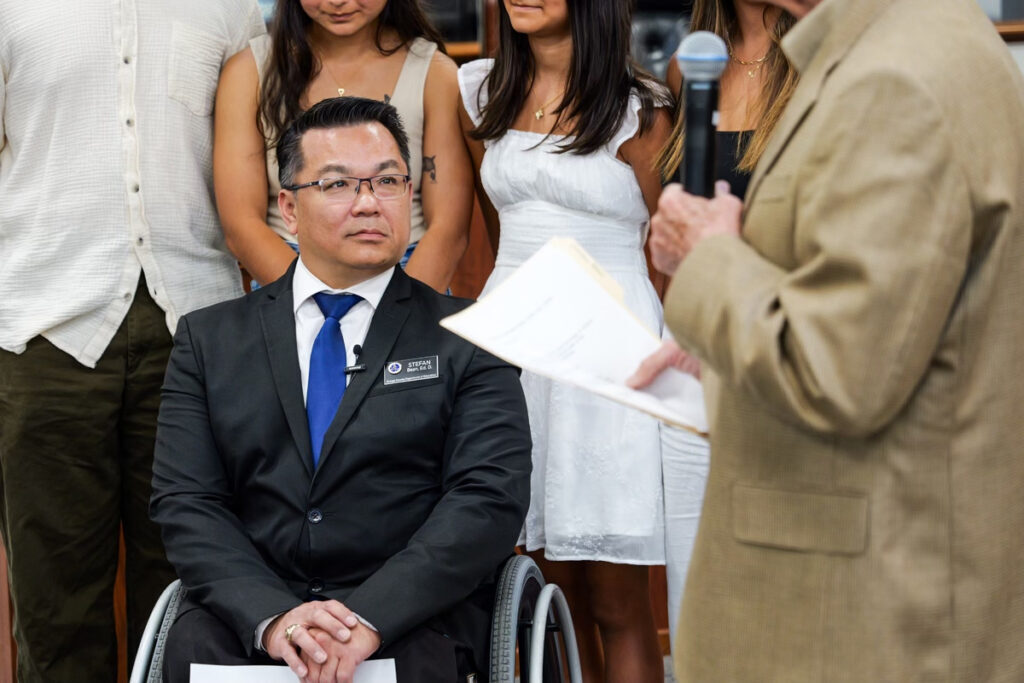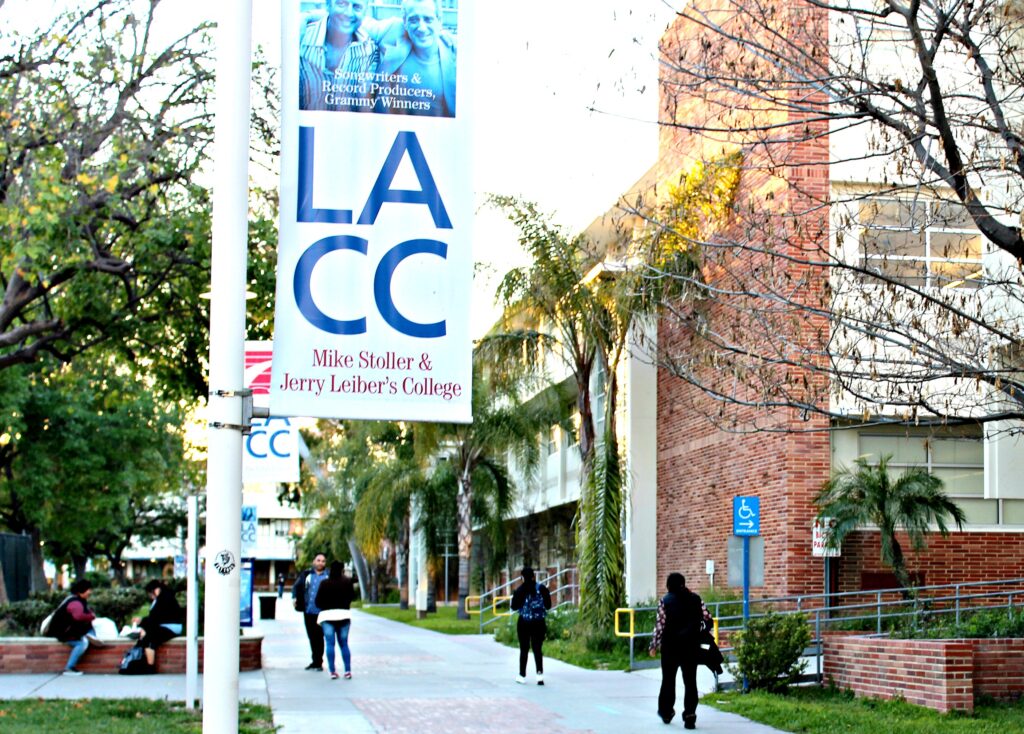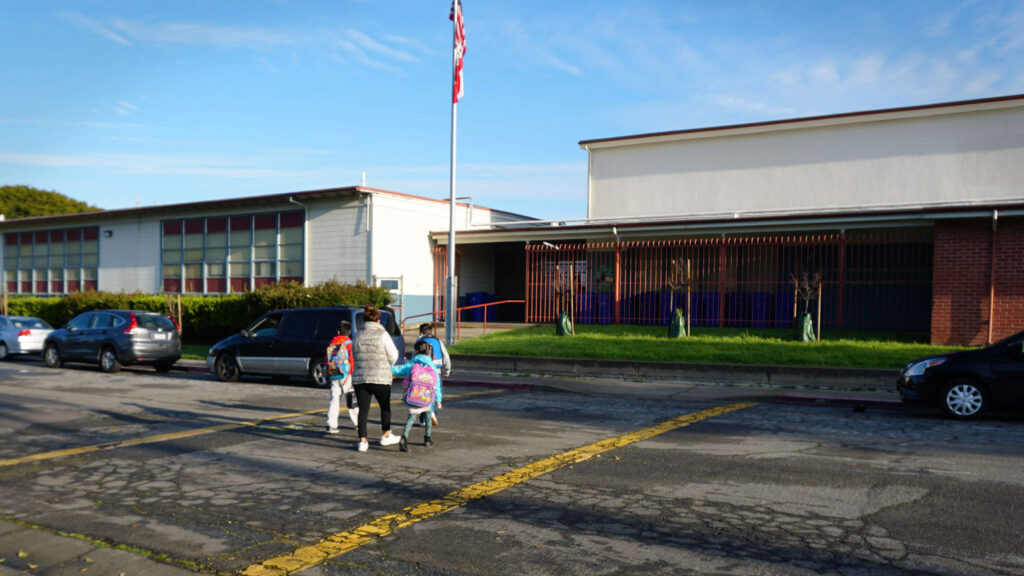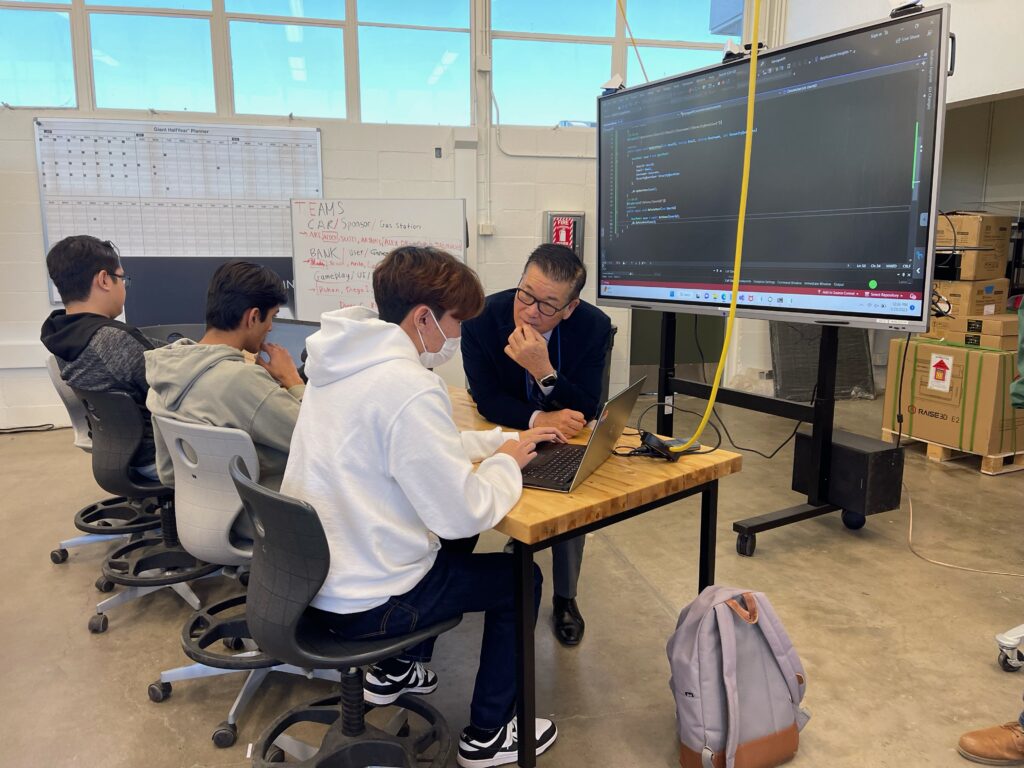
Credit: Alison Yin / EdSource
Students who are chronically absent from school are much more likely to struggle with mental health challenges, with pre-teen boys and teen girls reporting some of the highest signs of distress.
When students need help, availability of mental health support often depends on the income of families. “As household income increased, so did the availability of mental health services” in children’s schools, University of Southern California researchers found in a survey of 2,500 households nationwide.
Their findings are part of an in-depth report on the continuing national school absenteeism crisis in which 25% of students, or about 12 million children, across 42 states and Washington, D.C., were chronically absent in the 2022-23 school year. That rate remains higher than the pre-pandemic national rate of 15%.
EDITORS NOTE
This in-depth report on chronic absenteeism is part of an EdSource partnership with the Associated Press and Stanford Professor Thomas Dee.
For earlier coverage, go to EdSource’s Getting Students Back to School.
— Rose Ciotta, investigations and projects editor
While California saw a decrease of 5 percentage points in chronic absenteeism during the same school year, to 24.9%, districts statewide are still struggling to get all students back to school.
“Chronic absenteeism in California is still twice what it was prior to the pandemic, and roughly 1 in 4 kids in public schools are chronically absent. That is just really striking and is a serious barrier to achieving academic recovery for this generation of students who were so harmed by the pandemic,” said Thomas Dee, a Stanford University education professor and economist who gathered nationwide data in collaboration with The Associated Press and the release of the USC research.
Emotional and behavioral problems also have kept kids home from school. University of Southern California research shared exclusively with AP found strong relationships between absenteeism and poor mental health.
For example, in the USC study, almost a quarter of chronically absent kids had high levels of emotional or behavioral problems, according to a parent questionnaire, compared with just 7% of kids with good attendance. Emotional symptoms among teen girls were especially linked with missing lots of school.
Families with the lowest incomes reported a much higher rate of using mental health services if they were offered to their children in school — more than five times higher than those with the highest incomes. And, crucially, the researchers also found that 1 in 5 respondents would have used mental health services if they were made available at their school, with higher rates among Black and Hispanic families who were surveyed.
“There is tremendous opportunity here for schools to increase the offerings but also, if they have the offerings, to increase the outreach to the kids and the families that need it because there is clearly an unmet need,” said Amie Rapaport, who co-authored the report and is the co-director of Center for Economic and Social Research at USC.
‘I had a very bad year’
If Jennifer Hwang’s son made it to his first grade classroom, it was rarely without a fight.
He struggled with severe attention deficit hyperactivity disorder (ADHD), and Hwang says his teacher’s habit of discarding art work in front of him would spike his anxiety, leading to violent outbursts and refusing to even get in the car or walk onto campus.
“I thought I would have a good year in first grade, but I didn’t,” said her son, 8, whose name Hwang declined to share to protect his privacy. “I had a very bad year.”
The absences began piling up during the second semester of that 2022-23 school year; he started missing two to three days most weeks. He soon became chronically absent, meaning he missed at least 40 days total. That classified him as chronically absent because he had missed at least 10% or more days in one school year. He began to see a therapist outside the L.A. Unified district.
Hwang tried getting her son an individualized education program (IEP), which would grant him access to school-based counseling services given his ADHD diagnosis. But because her son’s academic performance was up to par, the school said he didn’t need it.
She also inquired about him seeing a child psychologist who went to his Riverside Drive Charter campus in Sherman Oaks once or twice a week — but the waitlists were too long. Because he was already seeing a therapist outside of school, Hwang gave up on pressing for school resources.
The USC report published Thursday highlights that pre-teen boys, which includes children ages 5 to 12, are struggling significantly with symptoms of hyperactivity and conduct problems, while teen girls, ages 13 to 17, are struggling most with emotional symptoms, such as depression and anxiety.
Morgan Polikoff, a co-author of the USC report, said they cannot confirm there is “a cause and effect here,” noting that the correlation between chronic absenteeism and mental health challenges could “go both directions.”
“In reality, it’s probably both ways. There’s probably some kids for whom increasing anxiety is leading them to stay home, and there’s probably kids who are missing a lot of school and that’s increasing their anxiety. So it probably is bi-directional or multi-directional,” Rapaport agreed.
Both the USC researchers and Dee advocated for more research to better understand the causes of persistently high chronic absenteeism rates.
LAUSD’s chronic absenteeism problem
Last year, for second grade, everything changed, Hwang said, largely thanks to a teacher who adapted assignments to suit her son’s social-emotional needs and incorporated “brain breaks” into the school day, which Hwang’s son said helped him concentrate.
“She understood him. She knew that he was bright and he felt things much more deeply, and he saw things differently and with a very different perspective,” Hwang said. “She allowed him to feel heard.”
“One day (his teacher told me), ‘Oh, my goodness, your son just gave me a hug!’ Hwang said. “That doesn’t come cheap because he does not give out hugs very often. So that he actually hugged the teacher … that says a lot.”
Hwang and her family aren’t sure what third grade will bring, but they were able to at least secure a 504, a type of plan that helps level the playing field for students with disabilities, so her son could have access to a special chair and space to doodle.
LAUSD, the second-largest school district in the nation, has struggled with high rates of chronic absenteeism since the onset of the pandemic. Nearly 33% of their over 400,000 students were chronically absent during the 2022-23 school year, down from about 40% the previous year.
Most recently, in 2023-24, preliminary data shows their rate is hovering at 32.3%, a spokesperson said.
Still not enough
LAUSD has increased its staffing of social workers and pupil attendance workers, but staffers say it’s just not enough.
“We have what we can afford at this point — more than ever before — but still not at an appropriate ratio that I think this board, or myself, would feel comfortable,” Superintendent Alberto Carvalho said at a news conference Monday.
Carvalho described the district’s staffing as “an unprecedented network” but did not specify how much staffing had increased.

Ofelia Sofia Ryan is one of LAUSD’s roughly 400 pupil services and attendance counselors who are on the front lines helping get chronically absent students connected with mental health resources and Medi-Cal so they can get back to school.
This year, the 20-year district veteran works in five elementary schools, including Orchard Academies in the city of Bell.
“Poverty is the No. 1 issue. Financial issues are … second — the inability of a parent to monitor because they are having two jobs, which also relates to the poverty issue,” Ryan said. “Mental health, I would say that will be maybe next.”
Darlene Rivas, one of the district’s 800 psychiatric social workers (PSWs), is assigned to two East Los Angeles elementary schools: William R. Anton and Lorena Street.
“We have to be team players because it can’t just be one person,” Rivas said. “I think that’s why you see a lot of exhaustion within PSW professionals.”
There is a long waitlist for students in need of therapy, she said. If a parent can’t make it to an initial appointment, it can take months to reschedule.
Adding staffing can come from school funding, but there are competing demands.
This year Ryan said she started on an LAUSD campus two days a week. At the last minute, “boom,” they dropped a day, she said.
“That’s very unfair, because (the district tells) you, on one hand, mental health matters, attendance matters. You’re working your butt off to get attendance improved. I improved attendance in all my schools. Everything was done by the book, and then (the school) just took the money away,” said Ryan. “You cannot do anything. You are powerless.”
Carvalho regularly touts the district’s iAttend program, where he, among others, visits the homes of chronically absent students to coax them back to school. The district made more than 34,000 home visits last school year, contributing to a more than 4 percentage point decrease in chronic absenteeism, according to the district.
What the public doesn’t know is how much work it takes after the house visit to get the child back in school, Ryan said.
Local barriers require local solutions
Researchers like Dee offer advice for lowering chronic absenteeism rates: “Be acutely aware of the problem” and “look to the really local barriers.”
That advice appears to be playing out successfully farther north, in Placer County, where more and more of Roseville City School District’s 12,000 students are attending school regularly each year.
Placer’s 2023-24 absenteeism rate is expected to be about 11% — nearly double what it was pre-pandemic. But that is down from 20% in 2022-23 and 26% in 2021-22.
School staff have found the two main reasons for the absences are “misinformation and a lot of struggle,” said Jessica Hull, the district’s executive director of communication and community engagement. They zeroed in on these top reasons by closely tracking absenteeism over several years with their attendance system plus a notification system managed by a third-party team, SchoolStatus, that they hired specifically to address chronic absences.
The misinformation largely centers on families being unsure of whether to send a child to school when they are sick, not knowing they can rely on independent study if the family is going on a lengthy vacation, or not understanding the importance of enrolling in pre-kindergarten known as TK.

This misinformation is part of what Dee and other researchers are calling “norm erosion.”
“The learning experiences of families and students during the pandemic, in particular the experience of remote schooling, may have reduced the perceived value of regular school attendance among students and parents,” said Dee.
He cautioned against blaming parents for the erosion, saying that “we’re in a crisis now that merits immediate attention and perhaps a little less finger-pointing.”
The struggles that Hull, from Roseville, said families face are often mental health challenges, particularly with middle schoolers, or families with unmet basic needs, such as unstable housing.
One of their solutions to both barriers has been constant check-ins with those chronically absent students in order to offer resources, such as access to mental health specialists, gas cards to families facing transportation issues, and offering families bags of food from the local food bank.
Another help is clearly explaining the notices behind their child being absent. “Schools are all about the acronym and all about words that no one else understands, so we start sending letters home and talking about truancy and chronically truant and excused absence and unexcused absence — all of that’s a mess,” Hull said.
Instead, parents can expect to see at schools half-sheets of card stock paper explaining the terms and printed in five languages from English to Ukrainian to Pashto.
“It’s really trying to remove that language barrier when we are talking jargon, and they’re just saying, ‘my kid needs help, we need help figuring out how to get them to school,’” Hull said.
In Oakland, districtwide efforts include creating a sense of belonging. Oakland’s African American Male Achievement project, for example, pairs Black students with Black teachers who offer support.
Kids who identify with their educators are more likely to attend school, said Michael Gottfried, a University of Pennsylvania professor. According to one study led by Gottfried, California students felt “it’s important for me to see someone who’s like me early on, first thing in the day,” he said.
The Associated Press contributed to this story.
